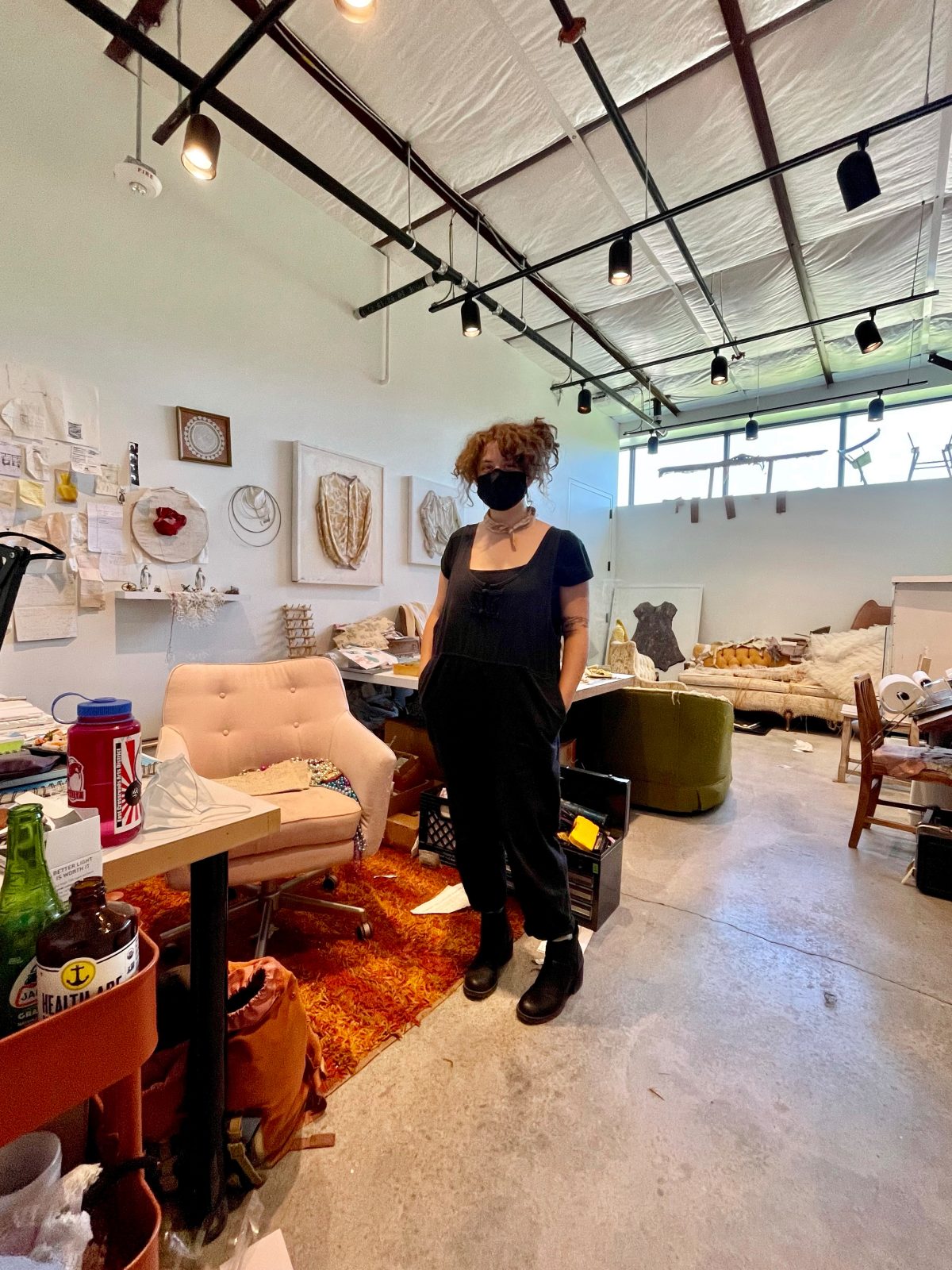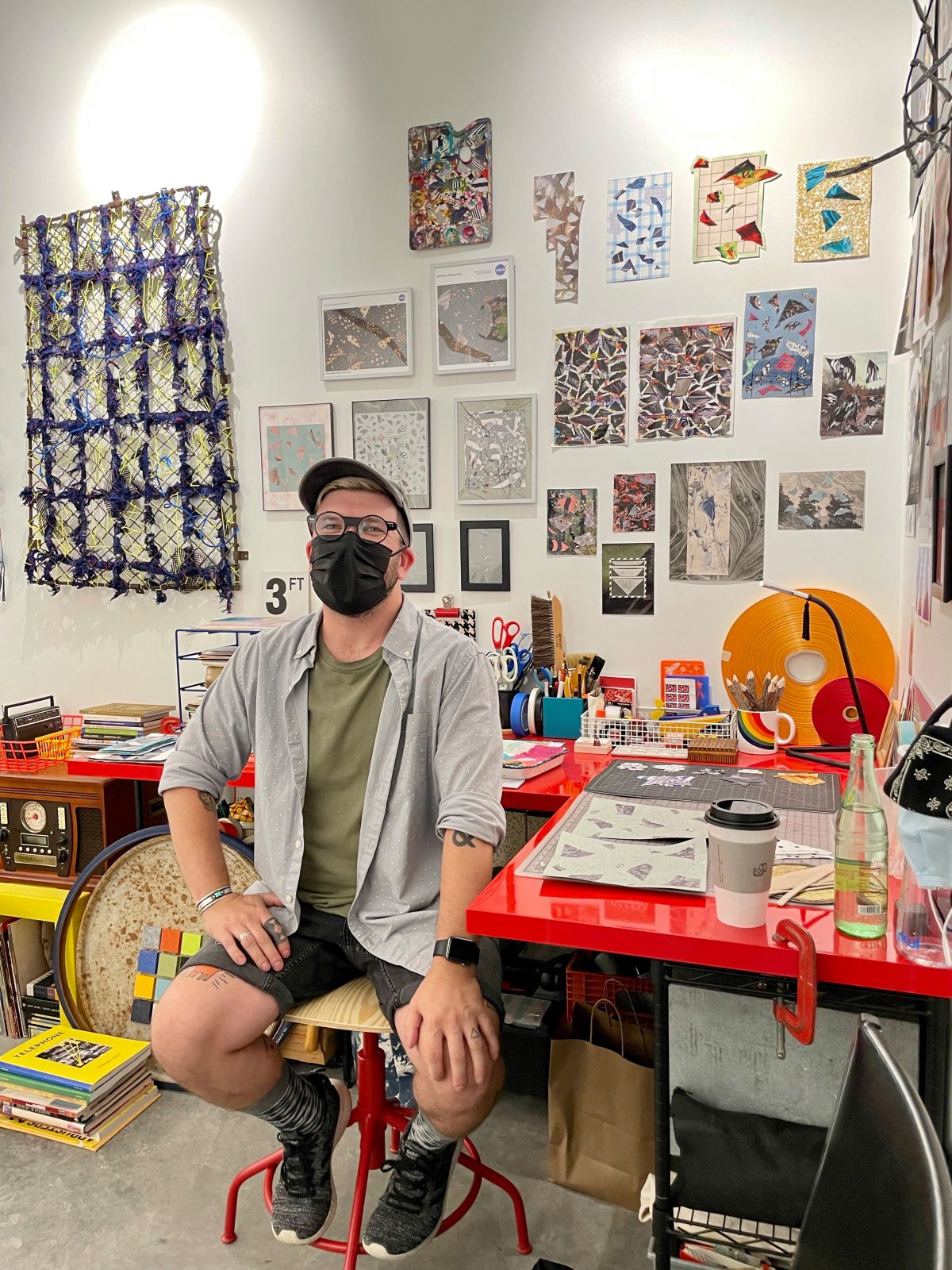
KANSAS CITY — Smack in the middle of flyover country and situated in the semi-industrial yet woodsy Volker neighborhood of Kansas City, Missouri, a shiny new beacon for community-driven arts incubation opened its doors in a former medical parts factory. The brand new, 20,000-square-foot Charlotte Street Foundation building celebrated its grand opening on June 11 and 12 with a ribbon-cutting, multiple exhibitions, and open studios. The $10 million transformation is evidence that sometimes DIY grassroots efforts can conduct multi-million dollar capital campaigns to build a state-of-the-art facility, while at the same time steadfastly holding on to an artist-driven core mission to support and catalyze a local artistic community.
Kansas City is not like Los Angeles, San Francisco, New York City, or even Chicago. There’s less density — yet the tried and true cycle of gentrification and rising studio rents have hit here as well. This also meant that prior to Charlotte Street’s opening, any sense of artistic community and collaboration was a bit more piecemeal and hard-won.

The organization was founded in 1997 by David Hughes, Jr. and named in honor of visual artist John Pushek — who, during the ribbon-cutting, Hughes describes as “probably the most generous person I’ve ever met, even without a penny to his name.”
“He’d sell a painting for $350 and go buy champagne or ribs and beer and host people in his backyard for a barbecue,” he explains. The rental house became known as Charlotte Street Mission, where he fed and nourished so many artists in the city.
“That camaraderie and community that emanated from his backyard and the notion of artists supporting each other was really the inspiration for the first Charlotte Street award back in 1997,” he continues, “which evolved into a broad array and network of support you see today.”

The artist-driven local community remains a key component to Charlotte Street Foundation despite its growth from a cobbled-together network of spaces spread throughout the city into a modern state-of-the-art facility. Research conducted by the foundation prior to opening their new campus found that nearly 50% of Charlotte Street’s artists lived within a five-mile radius of the foundation’s new campus.
“The art community and community as a whole lost so much this past year,” remarks Amy Klingman, the center’s executive and artistic director. “At Charlotte Street, we’re thinking critically about how we build our ecosystem back better. We hope that with opening these doors, we’re opening up to new ideas, new collaboration, new momentum, new possibilities for the artists we serve in Kansas City.”
“We’re trying to create a point of density by bringing these things together,” attests Klingman. “So the artists still benefit from those kinds of exchanges even though we’re not in a big city.”


Prior to the foundation’s unveiling of its new 20,000-square-foot campus, the organization spanned about the same amount of footage chopped into seven distinct spaces, pop-up style, with frequent changes depending on terms of leases and availability. It was a hodgepodge that meant missing out on symbiotic opportunities and creative synergy.
“We’re really happy to be in this space because now, if somebody comes to see an exhibition, they might catch a performance and they may run into their friend that’s a resident upstairs,” Klingman explains. “There’s a lot of opportunity for happenstance and collaboration. […] We are all so ready to be in dialogue with each other in a physical way.”
The timing couldn’t be more right, considering the insatiable craving for connectivity following more than a year of quarantine.

Artist Chico Sierra is one of the artists that the center serves, living within that five-mile radius. His digitally overlaid mural “The Further I Am, The More I See” (2021), on display for the opening exhibition, ponders the artist’s multi-ethnic identity in a mash-up of symbolism and pop culture references. Chico feels a boost in community and credits the new center for rejuvenating Kansas City arts.
“I’m looking forward to seeing individual artists begin to blossom, with access to space and a place to sit with your work comes confidence to explore new ideas,” he says of what he describes as an impressive facility. “With the proximity to other artists and access facilities that may be new to an artist’s practice, I imagine folks will begin to explore different ideas and new ways of creating work communally.”
The foundation had already hosted around 100 events — including gallery shows, workshops, lectures, and performances — annually prior to it being housed under one roof. The new space means it can plan ahead a little easier.
Take the expansive 1,600 square foot gallery. The far-reaching multimedia exhibition Who We Were, Who We Are, Who We Will Be was the first show on display. Julie Farstad’s “Urgent Experiments in Tending” (2021) is spread along much of the front wall. The mixture of fluorescent lighting and live plants hanging out with intimate sketches on paper is a magnificent jumble of form, texture, and light that becomes anew at every glance and proves an enticing juxtaposition to Sierra’s mural.
“What we have here is a lot of hybridity in practice,” describes Klingman of the new facility. “For example, there’s a string quartet playing, but they’re going to be followed by a film. And they were both in the same residency program out in the Tall Grass Prairie.”
In the new paradigm, everything’s informed by the same environment, but that change didn’t come without a good bit of trepidation of messing with a model that was already doing such a good job supporting community arts.
“People loved the pop-up structure. But our downtown was changing a lot. It was gentrifying. Space was changing. And it was not as readily available or as affordable,” says Klingman of a dramatically and quickly transforming area. The foundation decided sustainability was essential and that to have it, they needed to create it. “Our community has always been one where you have tons of space. That was one of the reasons why artists like being here. As people were getting pushed out of studio spaces, we were thinking about how can we make space for artists here.”

In addition to the gallery, library, meeting room, black box theater, and multiple audio-visual recording rooms, the space includes 30 studio spaces for visual, performing, and other artists who are selected by juries for a two-year free residency. On opening weekend, that includes second-year resident Mary Clara Hutchison, an assemblage artist who works with furniture, including miniature versions for dolls, to explore the idea of home and our body’s relationship to pieces of furniture. There are at least two vintage sofas and multiple armchairs, all vintage and tufted and coming unfurled. She believes that the studio space has focused and elevated her art-making, also relieving pressure she sometimes puts on herself to make perfect art prolifically. Like Sierra, she also lives within five miles of the new center.
“I am more comfortable trying new things and failing at them,” she says. “I also recognize different influences stemming from my fellow residents. It’s great to be around other artists instead of holed up in my house, it helps churn up different ideas and processes to explore.”

One of those artists, who has a studio around the corner, is Craig Deppen Auge who describes himself as “kind of a collage/found objects/assemblage artist” who likes to merge these forms together to focus on the corrosion of weird objects. “I’ve drifted into a fiber art adjacent place in the last couple years, where it’s gone from collages that have images of fabric and fiber kind of floating around, to actual textile.” He says he’s interested in exploring time and the relationship between past, present, and future. He believes the center will become a vibrant community hub that will become a Kansas City arts destination.
“We really have support in place for anything to take shape,” he says. “I’m excited for personal connections, especially […]more frequent, impromptu studio visits, because of the residency truly being more ingrained with all the public events in that space.”
It’s an artist-centric, artist-driven, and artist-informed model that radiates in Charlotte Street Foundation’s state-of-the-art facility. There’s an opportunity here to reimagine true community-driven and community-informed art, which may very well benefit from larger institutions around the corner but don’t have to structure themselves as part of one.

“It feels to me that Kansas City’s art scene is undergoing a transformation, and I hope the Charlotte Street headquarters will participate positively in that,” reflects Hutchinson, now that she’s had more than a month in her studio. “There’s a great opportunity here for Charlotte Street to double down on its support for artists — not only by offering luscious space and facilities but also by becoming a skeletal part of Kansas City’s art ecosystem and continuing its larger community-based influence.”
“Artists make art makes community makes artists”: it’s a repeated phrase in a spiral painted on the wall in Charlotte Street Foundation’s new library and meeting room. It’s exactly this that feels maintained from CSF’s humble beginnings with backyard barbecues, and lives on today in a grandiose space where multifaceted and collaborative artists will flourish for many years to come.
0 Commentaires